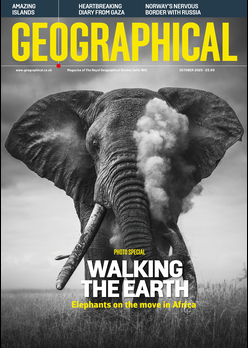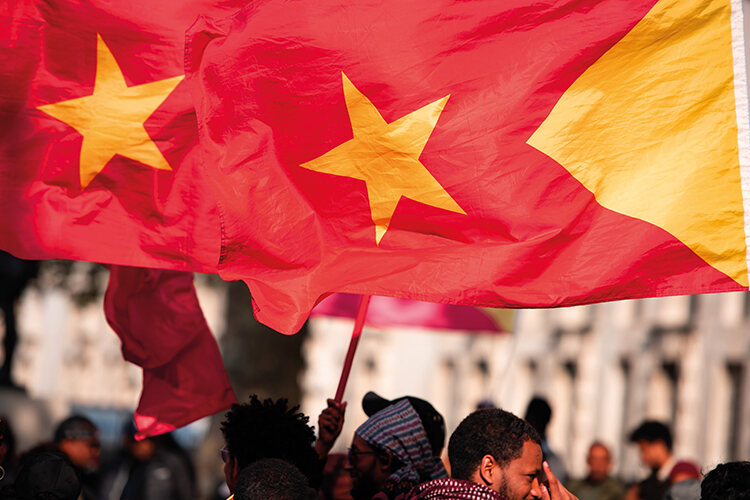
The war that devastated Tigray between November 2020 and 2023 may be officially over, but war crimes are still taking place in Ethiopia’s most northerly region. With the UN turning its back and the world’s attention elsewhere, starving and displaced civilians feel forgotten
By
The year was 2022, and news from the war in Ukraine dominated headlines. Shock at the full-scale invasion of a European country, combined with footage of airstrikes, missiles and fighting on the ground inevitably trained the eyes of the global media. But throughout that bloody year – one that saw more battle-related deaths than any year since 1984 – another war was raging which caused more fatalaties over the 12 month period than the wars in Ukraine, Yemen, Myanmar, Nigeria, Somalia, Mali and Burkina Faso combined. When it comes to deaths, it has been dubbed the ‘worst war of the 21st century’.
The conflict between the Government of Ethiopia, acting in alliance with Eritrea, and the Tigray People’s Liberation Front (TPLF), had begun in November 2020. For two years it caused devastation in Tigray, the northernmost part of Ethiopia and neighbouring regions, maiming and killing soldiers and civilians, decimating crops and livestock, destroying homes and livelihoods. A total blockade of Tigray ensued. Humanitarian agencies couldn’t enter. Electricity, banking services, telecommunications and internet access were shut down. Tigray was in the dark.
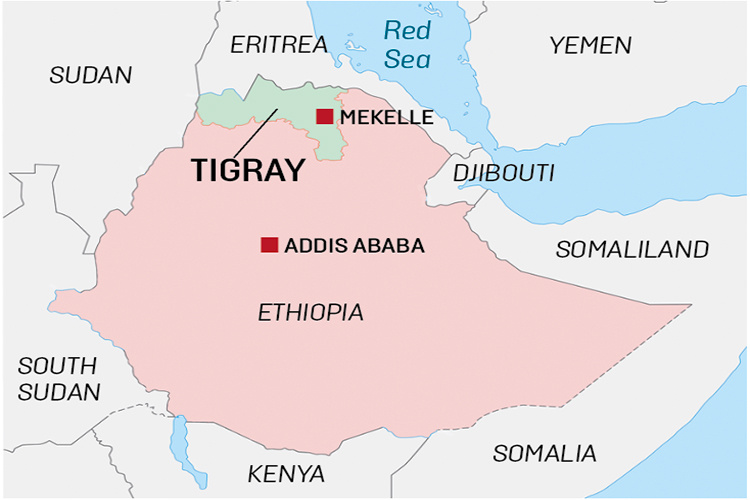
Hidden from scrutiny, terrible atrocities took place. ‘We cannot overstate the scale and gravity of atrocities committed by all parties to the conflict,’ said Mohamed Chande Othman, chairperson of the UN International Commission of Human Rights Experts on Ethiopia (ICHREE) in October 2023. The commission was established by the UN Human Rights Council in 2021 to investigate the reports of atrocities coming from the country. ‘We found evidence of war crimes and crimes against humanity committed on a staggering scale.’
The most widely cited estimate of total deaths from the war, produced by Jan Nyssen at Ghent University, stands at 600,000, although the real number will never be known. Full-scale fighting came to an end in November 2022 with the signing of the Cessation of Hostilities Agreement (CoHA) by the government of Ethiopia and the TPLF, but reports of human rights abuses and sexual violence continue.
While it would be false to say that no one paid attention to the conflict, it undeniably received scant attention, particularly in comparison with other recent conflicts and in light of the scale of atrocities committed. The reasons for this not only haunt those caught up in the conflict, but have serious implications for the future. If few were paying attention at the height of the war, even fewer are watching today. With eyes elsewhere, the risk of further atrocities remains high and the perpetrators of the worst crimes walk free.
WAR AND WAR CRIMES
Tensions between Ethiopia’s three main ethnic groups – Oromos, Amharas and Tigrayans – are long-standing and underpin this war. In addition, decades of border conflict with Eritrea, draped uneasily across the north of Tigray, played a significant role. The outbreak of full-scale war in November 2020 came after both the federal government under Ethiopian prime minister Abiy Ahmed and the local Tigrayan government controlled by the TPLF, held elections which the other side called unconstitutional. The federal government and its allies allege that the TPLF then started the war by attacking the headquarters of the Ethiopian National Defense Force (ENDF – the main state military) in Mekelle, the capital of Tigray. Military action by Ethiopian federal and Eritrean forces, supported by regional Amhara forces (Amhara is located just south of Tigray), followed immediately.
Other commentators say this action was already well-planned, motivated by Abiy’s desire to centralise control and bolstered by anti-Tigrayan sentiment. Certainly it seems clear that the government had already been disseminating an anti-TPLF and ethnicised narrative. According to Martin Plaut, the BBC World Service’s former Africa Editor and co-author of Understanding Ethiopia’s Tigray War, Abiy and his associates began a programme of dehumanising hate speech against Tigrayans in July 2020.

The war then fell into several phases. Following the initial occupation of Tigray, the Tigrayans undertook a massive mobilisation to form the Tigrayan Defence Forces, which recaptured Mekelle in June 2021 and later began a march on Addis Ababa. They retreated back to Mekelle in November 2021, after which came the final assault by the Eritreans, ENDF and Amhara militias, ending with the November 2022 cessation of hostilities.
Across all of these phases, humanitarian groups and the UN have documented horrific human rights abuses from all sides, but on an especially large scale by the Ethiopian, Eritrean and Amhara militias against Tigrayans. The Eritrean defence forces in particular are implicated in many of the very worst massacres and abuses.
In its report titled: ‘We will erase you from this land: Crimes against humanity and ethnic cleansing in Ethiopia’s Western Tigray Zone‘, Amnesty International documented how newly-appointed officials in Western Tigray and security forces from the neighbouring Amhara region, with the acquiescence and possible participation of Ethiopian federal forces, systematically expelled several hundred thousand Tigrayan civilians from their homes using threats, unlawful killings, sexual violence, mass arbitrary detention, pillage, forcible transfer, and the denial of humanitarian assistance.
A 2022 report by ICHREE (the UN Commission) found reasonable grounds to believe that the federal government and allied regional state governments ‘implemented a widespread range of measures designed to systematically deprive the population of Tigray of material and services indispensable for its survival, including healthcare, shelter, water, sanitation, education and food’. Lack of access to food and medicine was a huge issue, and remains so. Of the 600,000 estimated to have died, between 228,000 and 356,100 people died due to famine and between 124,000 and 155,000 died from lack of medical attention.
It is also clear from multiple reports that sexual violence against women and girls took place at a truly shocking level. ICHREE found that rape and crimes of sexual violence were perpetrated on a ‘staggering scale’ throughout the conflict, with Tigrayan women and girls being targeted with particular violence and brutality by Ethiopian and Eritrean forces and regional militias. It is a crime for which no side is wholly innocent. An Amnesty report also pointed to the gang-raped of dozens of women and girls by TPLF-affiliated soldiers in two areas of northern Ethiopia’s Amhara region.
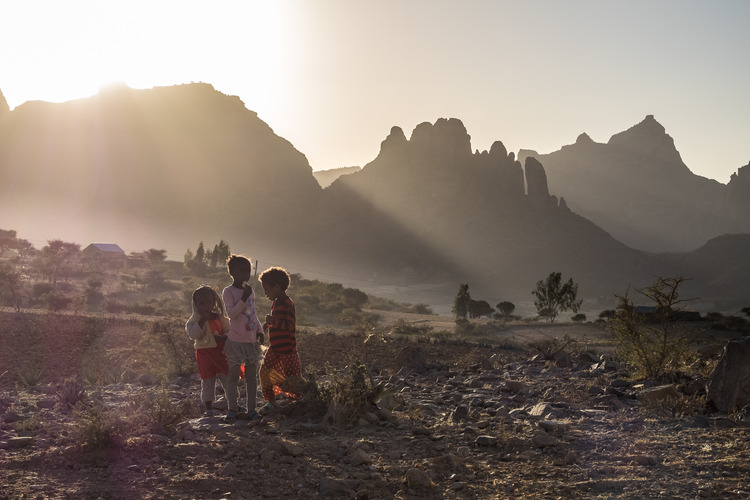
MUTED RESPONSE
On 2 November 2022, the government of Ethiopia and the TPLF signed the Cessation of Hostilities Agreement (CoHA) in Pretoria, South Africa. Full-scale fighting stopped and, most importantly, the blockade was lifted, allowing the entry of humanitarian relief. However, the situation is far from solved. Eritrean troops still control some areas on the border, despite the fact they were meant to leave under the CoHA (of which they were not signatories). Troops have blocked aid agencies and reports of atrocity crimes from these areas, in particular rape and other forms of sexual violence, are ongoing.
According to Human Rights Watch, within the Western Tigray Zone, which remains largely inaccessible to humanitarian agencies, the authorities and Amhara regional forces and militias are continuing an ethnic cleansing campaign and are still forcibly expelling Tigrayans from their homes. Meanwhile, nearly 40 per cent of the Tigrayan population is suffering from an extreme lack of food, a situation exacerbated by the fact that in May 2023, the World Food Program suspended aid deliveries to Ethiopia’s northern Tigray region amid an internal investigation into the theft of food. More than a million people remain internally displaced, many occupying school buildings. Tens of thousands of people who fled into neighbouring Sudan are also living as refugees with little hope of returning.
Given all this, people linked to the war find the world’s muted response demoralising. For some, it feels deliberate. With other wars receiving so much attention, it is hard to avoid the conclusion that some deaths and some suffering are simply taken more seriously than others.
Tigrayan Gebrekirstos G. Gebremeskel was studying for his PhD in the Netherlands when the war broke out. Afraid that history of the war was not being preserved, he founded the media organisation Tghat in 2020 to cover the plight of his people. For the two years of the war he had no way of knowing what was happening to his family in Tigray. ‘There was no communication. We didn’t know if they were alive,’ he says. He recently learned that one family member who joined the Tigrayan resistance was killed. His grandmother also died during the blockade because he says she was not able to access medication.
The situation was the same for everyone living outside of Ethiopia but with family in Tigray. ‘I had almost a year before I heard whether my parents were alive or not, it was quite overwhelming,’ says Temesgen Kahsay, an assistant professor at the Norwegian School of Leadership and Theology, who grew up in Asmara in Eritrea and has lived and worked in several places in Ethiopia.

For Gebrekirstos, the war has fundamentally changed his view of the world. ‘We’re so naive, most of us. We have this belief that there is humanity, international law, order, solidarity. The truth is there isn’t anything like that. In Ukraine for example there is an interest to resist Russia. We think there is international solidarity, but it’s not for the sake of human rights, or out of understanding of human suffering, its simply because there is an interest there. Tigray has nothing to offer, in terms of business opportunities or markets. It doesn’t attract the attention of any of the powers – that’s the main thing. The war has taught us how it is. No one can save you.’
The fact that Tigray was entirely blockaded, preventing media from accessing the region, also played a part. Gebrekirstos acknowledges this and sees it as a tactic likely to deployed again. ‘This lesson will remain, it will be replicated everywhere. It works, to shut down and blockade people, to deny them medication, food. As long as images are not coming out, you’re ignored. But the main thing for me remains about interest.’
Jan Nyssen, a professor of geography at Ghent University in Belgium with long-standing links to Tigray, took a particular interest in the war and is responsible for the most comprehensive assessment of deaths. He compares the coverage of Tigray to the situation unfolding in Israel and Gaza. ‘Already after one to two months of war the question is being asked: is there a genocide?’ he says, a question that hangs over Tigray but which is no longer being formally investigated.
In part, Nyssen says the lack of broadcast media coverage during the Tigray conflict led to the discrepancy in awareness, compared to other current wars. He also considers urban warfare of the kind happening in Gaza more of a draw than rural fighting in which ’20 village boys are taken to the edge of the cliff, and shot and thrown down’. Finally, he too can’t escape the conclusion that wars in Africa are more easily written off. ‘There is a mentality that it’s only Africa, they’re always fighting. That’s commonplace in Europe at least.’
Martin Plaut, who followed the conflict daily from afar, thinks that it would be wrong to say outsiders didn’t care, but acknowledges that they mostly didn’t care enough to surmount the challenges of covering the war. ‘I think if it had been more central to say, European or American concerns, people would have tried harder and got further,’ he says, but he also thinks it natural people are more concerned about daily life at home.
To write his account of the war he had to rely on the remarkable resourcefulness of people who had no choice but to be there. ‘I thought it was a privilege to be getting interviews with people who were risking everything to phone me from inside Ethiopia, or give me information from inside Tigray,’ he says. ‘When they had next to no energy, and they were borrowing and begging and stealing to get to a phone line to call me.
‘I’m afraid the way in which media covers anything is always very random,’ he concludes. ‘I worked for BBC World Service for 27 years and it was never clear why anything was covered and why another thing wasn’t.’
REPERCUSSIONS FOR JUSTICE
Whatever the causes of the muted response, the consequence is a total lack of accountability for the crimes that undoubtedly took place. In October 2023, the mandate of ICHREE came up for renewal, but members of the UN Human Rights Council took no action to renew it – a decision that Human Rights Watch and other reputable sources put down to heavy lobbying by the Ethiopian government. The EU and other countries responsible for initiating the creation of the commission in the first place chose to normalise relations with Ethiopia rather than continue the process. The USA followed suit, as did the African countries. This leaves the peace process and transitional justice in the hands of the Ethiopian government, a situation that no one with an interest in justice in the region deems remotely satisfactory.
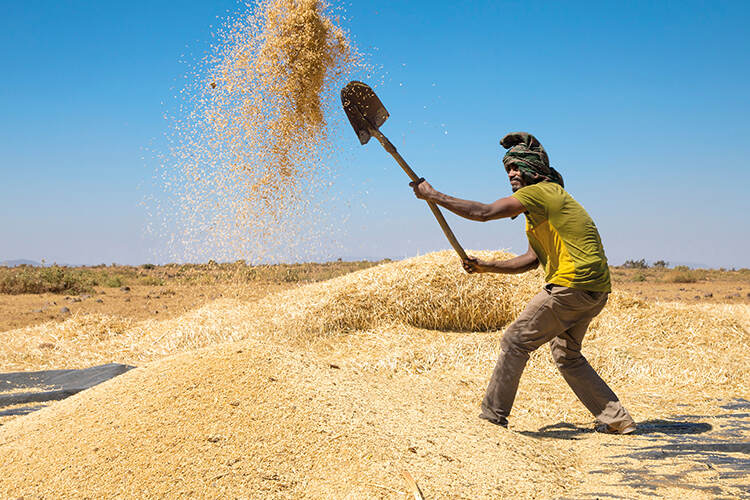
In its final report, the three commissioners of ICHREE made clear that the work of the commission was not finished. They pointed to the need for further investigation to determine the possible crime against humanity of extermination and the crime of genocide, while also noting the very real risk of future atrocities. Summing up, they said that the Ethiopian Government has adopted a strategy of ‘quasi-compliance’ – establishing domestic mechanisms and processes which purport to ensure accountability, but which in practice are used to deflect international attention and circumvent international scrutiny.
Steven Ratner, a professor of law at the University of Michigan was one of the three commissioners of ICHREE (previous work with the UN includes membership of the three-person expert group tasked with considering options for bringing the Khmer Rouge in Cambodia to justice). He highlights how at every turn the commission faced challenges when it came to accessing the war. Ethiopia and Eritrea refused the commission free and unfettered access, and fact-finding was done remotely. Nor did neighbouring countries, Sudan or Djibouti, allow access to refugee camps.
‘There’s very little external scrutiny of what Ethiopia is doing now and has done in the past,’ says Ratner of the situation today. ‘And that’s a real loss for the victims. The situation in Tigray is better, but the overall situation in the country is still very, very grave. To cut off UN oversight in the middle of all that is a setback for the UN system for protecting human rights. And it’s not just a setback for dealing with the past, for accountability or for reparations. It’s a setback because this kind of external oversight is also important for preventing future atrocities. My colleague on the commission, Radhika Coomaraswamy [a former under secretary general at the UN and the special representative on children and armed conflict], has often stated that wars without witnesses are particularly awful for the victims. Right now, there really are very few witnesses.’
Are people in Tigray aware that their case is not being adequately investigated? Some certainly are. ‘In recent weeks, we have heard from victims who are devastated by the decision to end the mandate of the Commission,’ said Coomaraswamy in a statement. ‘Many feel they have been abandoned by the international community. It is essential that, moving forward, the Ethiopian Government as well as the international community commit to putting survivors at the heart of efforts towards justice, truth, reconciliation, and healing in the country.’
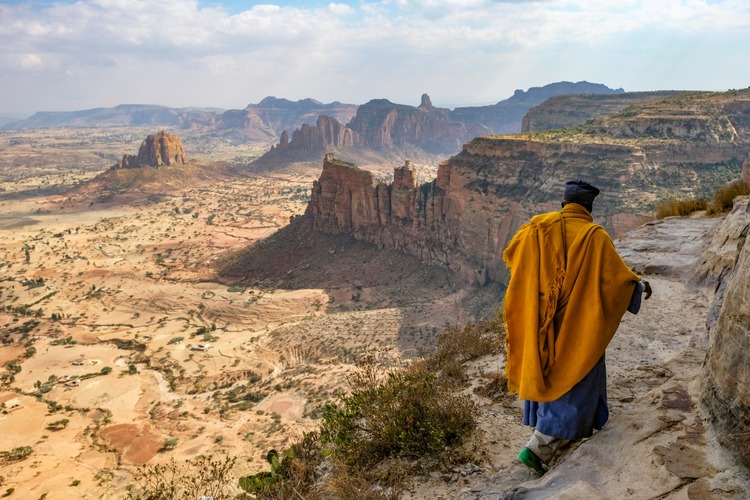
To Gebrekirstos, the fact that the Ethiopian Government has now been put in charge of the transitional justice process is almost beyond belief. ‘Could there ever be such a joke in the world,’ he says derisively. ‘I think you can only develop some kind of contempt for this world and institutions like the UN and those countries that say they care for human rights. This is what they have arranged for us. For me this is basically adding salt to our wound.’
‘I took it personally, it was very disappointing to see that denial of justice, especially for the people that have suffered,’ says Temesgen. Meanwhile, when it comes to daily life in Tigray, things will be forever changed. Temesgen visited Tigray in July 2023 to meet the family members he had been cut off from while working in Oslo, and to see for himself what had happened. ‘I was afraid, because I didn’t know what to expect. Also I wasn’t quite sure what situation I would I find my parents in,’ he says. ‘My main impression was that Tigray is devastated – I don’t know if there are enough words. Infrastructure – schools and hospitals – are destroyed and most of them are looted. Most schools are now turned into IDP (internally displaced person) centres for people from Western Tigray.’
It seems in the face of such destruction, the difficulty of finding the right words is common. ‘They try to avoid talking about the period of the war,’ Temesgen says of the Tigrayans he met on his visit. ‘They don’t want to start the conversation. When I asked the questions, they hesitated, or they watched over their shoulders, not to speak openly about it. People are busy making a life out of what has been left.’
‘People in Tigray are disorientated by what happened to them,’ says Gebrekirstos. ‘They pause for a long time and say “we don’t have words to explain this”. The only thing people seem to do now is to flee. Risk their lives. Go to the Middle East especially through Djoubti, Yemen, across to Jordan, through Somalia and then to the Middle East, especially Saudi Arabia. To me what that says is a total hopelessness in Tigray. Anything is better.’
Perhaps it is the fate of all wars to drop out of the news when another war comes along. Even the war in Ukraine has received significantly less air-time in light of the conflict in Israel and Gaza. But to turn away entirely risks allowing the unthinkable to go unacknowledged. ‘You can’t cover everything,’ says Martin Plaut. ‘I mean, if you covered every war in Congo, there would never be any other foreign news from Africa.’ Given this, I ask him what the goal of coverage is at all. After all, despite his resignation, he dedicated an extraordinary amount of time to documenting the Tigray war in immense detail. ‘Well, I think that if we didn’t cover them, they would just go under the radar, and you’d end up with even larger numbers of people killed.’
Temesgen is making the case for a remembrance day in Tigray. Noting than even among the Tigrayan leadership, the desire now seems to be to forget, he sees remembrance as essential. ‘This is not the first time in history that this kind of famine, combined with conflict and large scale, mass killings has happened in Tigray. Often there’s a tendency to gloss over, not to remember correctly. But it should be remembered, otherwise we’ll go back to the same problem in a few decades’ time.’
Ethiopia, Tigray and Eritrea
Eritrea gained independence from Ethiopia in 1993. At that time the Tigrayans were in charge of Ethiopia as the most powerful force in the central government. Though Tigrayans and Eritreans are linguistically and ethnically very close, this resulted in a lasting animus between the two populations, and goes some way to explaining Eritrea’s participation in the war on the side of the Ethiopian forces. The Eritrean forces have been implicated in many of the worst atrocities against Tigrayans.
Ethiopia and Eritrea make for very strange allies however. Although relations between the countries were eased in 2018 with the Eritrea–Ethiopia peace summit (a move which earned Ethiopian prime minister Abiy Ahmed the Nobel Peace Prize in 2019) they have historically been engaged in a protracted and bloody border conflict. This conflict could now be rearing up once more, centering on Ethiopia’s desire to regain access to the Red Sea and set up a port. A resurgence of war would be a disaster for Tigray, which neighbours Eritrea.

